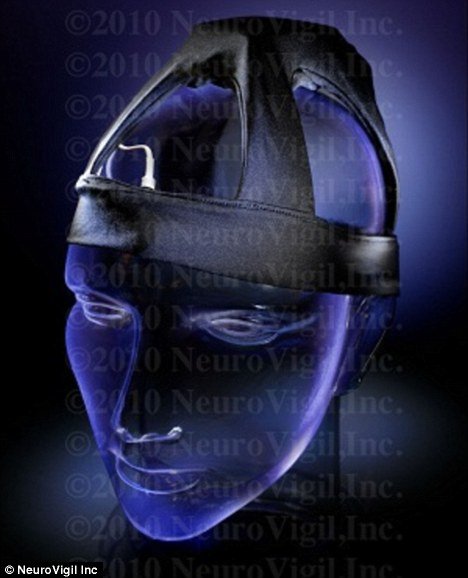iBrain, the NeuroVigil device that may be able to read thoughts, tested on Prof. Stephen Hawking
iBrain, a new device invented by Dr. Philip Low, CEO of California-based NeuroVigil, which was designed for sleep monitoring, may also be able to help people to convey messages merely by thinking them.
The gizmo “reads” brain wave patterns – and has been tested by renowned British physicist Professor Stephen Hawking, who is paralyzed by amyotrophic lateral sclerosis, or Lou Gehrig’s disease.
Prof. Stephen Hawking is testing the tiny device that could, just possibly, allow him to “speak again” – reading his thoughts directly from his brain.
“We’d like to find a way to bypass his body, pretty much hack his brain,” NeuroVigil’s founder, Philip Low, told KGTV San Diego.
Dr. Philip Low told The New York Times: “The iBrain can collect data in real time in a person’s own bed, or when they’re watching TV, or doing just about anything.
“The idea is to see if Stephen can use his mind to create a consistent and repeatable pattern that a computer can translate into, say, a word or letter or a command for a computer.”

iBrain, which was designed for sleep monitoring, may also be able to help people to convey messages merely by thinking them
The paper explained that the algorithm used by iBrain, which Dr. Philip Low calls “Spears”, was indeed able to translate Prof. Stephen Hawking’s thoughts into individual signals.
Dr. Philip Low plans on making further investigations into this aspect of the iBrain’s capabilities, but in the meantime, it’s being used as one of the most effective diagnostic tools for sleep researchers money can buy.
The science for such a development looks promising.
Last summer Dr. Philip Low flew to Cambridge, UK, and personally tested the device on Prof. Stephen Hawking.
ALS, also known as Lou Gehrig’s disease, has left the astrophysicist almost entirely unable to control his body. Stephen Hawking moves and communicates in painfully slow fashion, using an infrared scanner that picks up tiny twitches in his cheek muscles and translates them into words with complex computer programs.
Stephen Hawking, 70, is losing his ability to use even those muscles as his disorder advances.
Fitted with the iBrain device, which is a black headband with a series of neurotransmitters that sit against the cranium, Stephen Hawking was told to concentrate hard on several simple actions, such as forming his hand into a fist.
Dr. Philip Low recorded the brain waves that the iBrain picked up from the actions and fed the results into his extensive mind-reading algorithm, called Spears.
With enough research, Philip Low believes he can develop software that will convert these brain waves into thoughts, and allow them to be translated into letters words and sentences.
Eventually, it might be possible to carry on entire conversations using only the iBrain and computer translation software hooked up to speakers, Dr. Philip Low told the New York Times.
But for now, the machine has plenty of practical applications.
Swiss drugmaker Hoffmann La Roche is working with NeuroVigil to develop software that will allow the device to monitor how drugs on working in the brain.
Dr. Philip Low says it’s a key step toward creating highly-effective personalized medication.
It can also be used to simply and quickly diagnose autism, sleep apnea, depression and other disorders that affect the brain.
